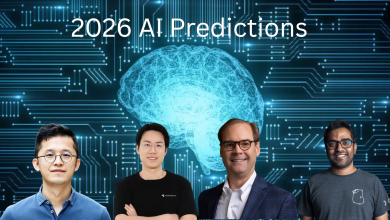Specific Features of Jooble’s Work
Jooble is an international job aggregator that has been operating on the online-recruiting markets of 71 countries for over 15 years. The company has gone from a startup founded by two students to a global employment platform and is now among the TOP-10 most visited websites in the Jobs and Career segment in the world, according to SimilarWeb. To achieve this, the company uses a web crawler technology, which visits over 140,000 resources daily: these are job sites, corporate sites of companies, sites of employment agencies, PJA, social networks, and classifieds. The collected vacancies are then placed on our website — jooble.org.
The job aggregator is a powerful source of jobseekers traffic for job sites, which are the main type of Jooble clients. For jobseekers, Jooble offers many vacancies from the maximum number of possible sources for employment. The benefit is that many available vacancies are collected in one place.
AI or ML?
Artificial intelligence has long been used to improve business processes and company operations. The application is quite broad — the Internet of Things, Machine Vision, Deep Learning, expert systems, text, speech and images recognition, business intelligence, etc. However, only a handful of giant companies in the world, such as Google, Facebook, Microsoft, and Twitter, are directly involved in creating and researching AI technologies. Such companies can usually maintain a staff of people who will make these technologies for two, five, or even ten years. Perhaps even unsuccessfully, but ultimately, they will develop something.
But many can afford to use the already created artificial intelligence models. These models are publicly available, and they can be trained to fit your needs. We tried using them but found that they come at the cost of speed and performance because the newer the model, the more labor-intensive operations it requires. Therefore, in our work, we use machine learning (ML) algorithms. In Jooble, we use both simple linear models and large decision trees.
How Technologies Improve Jobseekers’ Experience
Today, we are working on improvements to increase the chances of the response to the vacancy. Our team teaches and uses models for learning users’ reactions to specific vacancies. It allows us to improve the user experience. For example, we track users’ attitudes towards certain vacancies in real-time and, based on this data, improve the relevance of job searching on Jooble. The model gives them the vacancies that will have a better response from other users and will be more relevant to their queries. Additionally, we use analysis algorithms, also called collaborative filtering. It helps us understand what is more appropriate for the user, and the search shows not only the results for their specific query and vacancies with an exact match but also other similar vacancies that may be interesting and relevant to them.
Data Science at Jooble — the Beginning
The history of Jooble’s Data Science began when the team hit the iron ceiling — we understood that we had already collected a lot of data and statistics about our users and vacancies aggregated on our website. So, we wanted to use this knowledge to create additional value for both employers and jobseekers. That was the crucial moment — making the first Data Science team at Jooble dedicated to improving our website users’ experience. It happened in 2014. At the time, the team had 3 members. Now we have 15 data scientists.
Initially, we only had the infrastructure to store the big data and no expertise in aggregation necessary to create machine learning datasets for modeling. We had to build it all from scratch. We collected data, then we made datasets that we used to teach the models.
How Technologies Help Improve the Aggregator’s Performance
The first model we began to use was the rescorer — the model of baseline ranking re-sorting. The rescorer gives the most significant increase in performance, both from the client’s (employer’s) side and the jobseeker’s side.
To maximize the effectiveness of interactions between the Data Science team and the other teams and improve the company’s results in general, we use a unique dashboard. It is a new tool that we created only six months ago. This dashboard helps Sales and Customer Success teams to identify problem areas that cause a reduction in the volume of traffic we provide to our clients, and then quickly solve the problem. At the same time, we try to balance the usefulness for the jobseeker, who comes to our website to find a job, and our client — the employer, who needs these candidates.
We evaluate the effectiveness of the ML system in terms of each separate iteration of development, not in general. For example, there is a simple basic search we want to improve. To that end, we add a mathematical model to the search and hold A/B testing. A part of the jobseekers continues to use the usual search, the other one uses the search with the integrated re-sorting model. We collect the stats, evaluate different user metrics, and analyze whether the result for a certain period is statistically significant. If the result is as expected, we consider the new model better than the previous simple search model, and it becomes the new basic model. Any future improvements are implemented with A/B testing.
About the company
Jooble is an international job search website used daily by millions of people in 71 countries. The company has been operating in the online recruitment market since 2006. In its 15 years of existence, the company has gone from a startup founded by two students to a global employment platform. Today, Jooble is among the TOP-10 websites in the world in terms of traffic in the Jobs And Employment segment, according to SimilarWeb.




Serhii Voitenkov, Thank you for the article